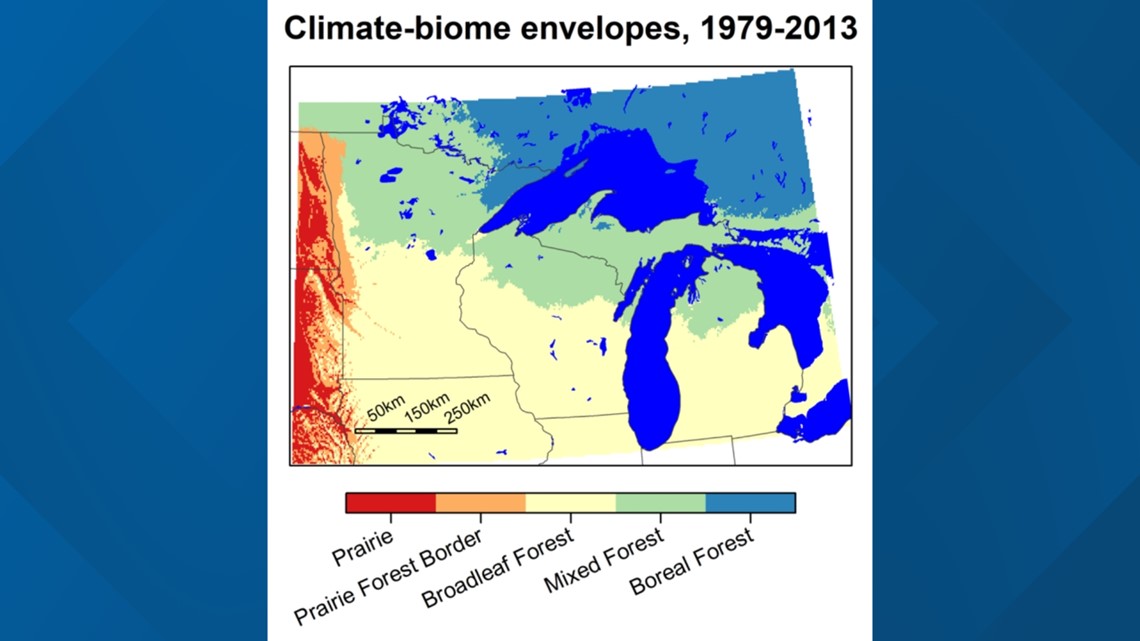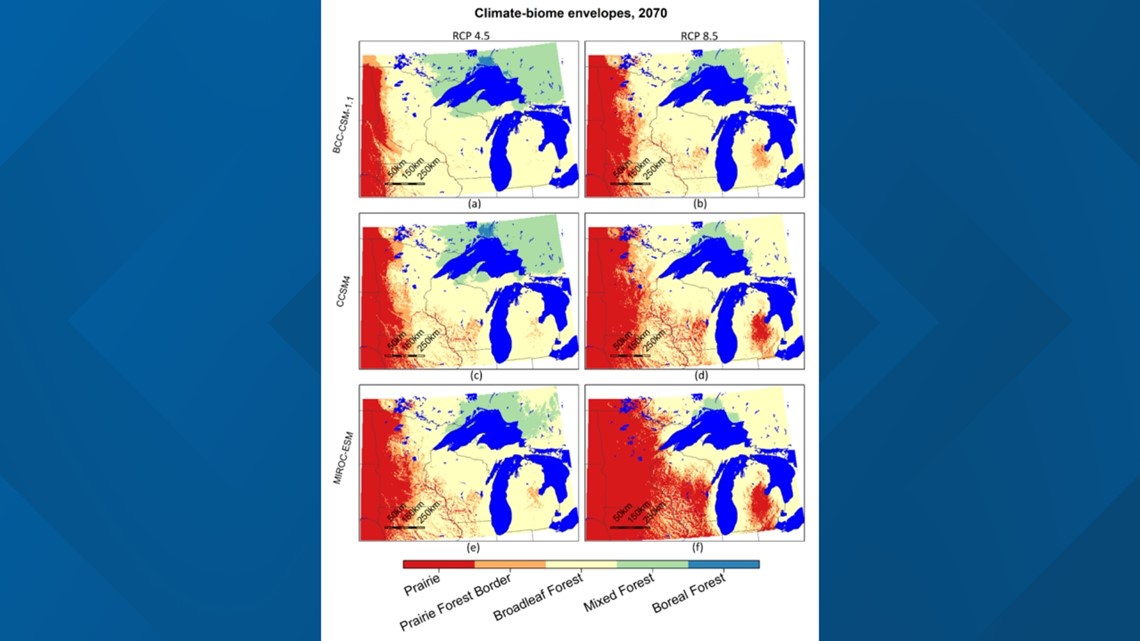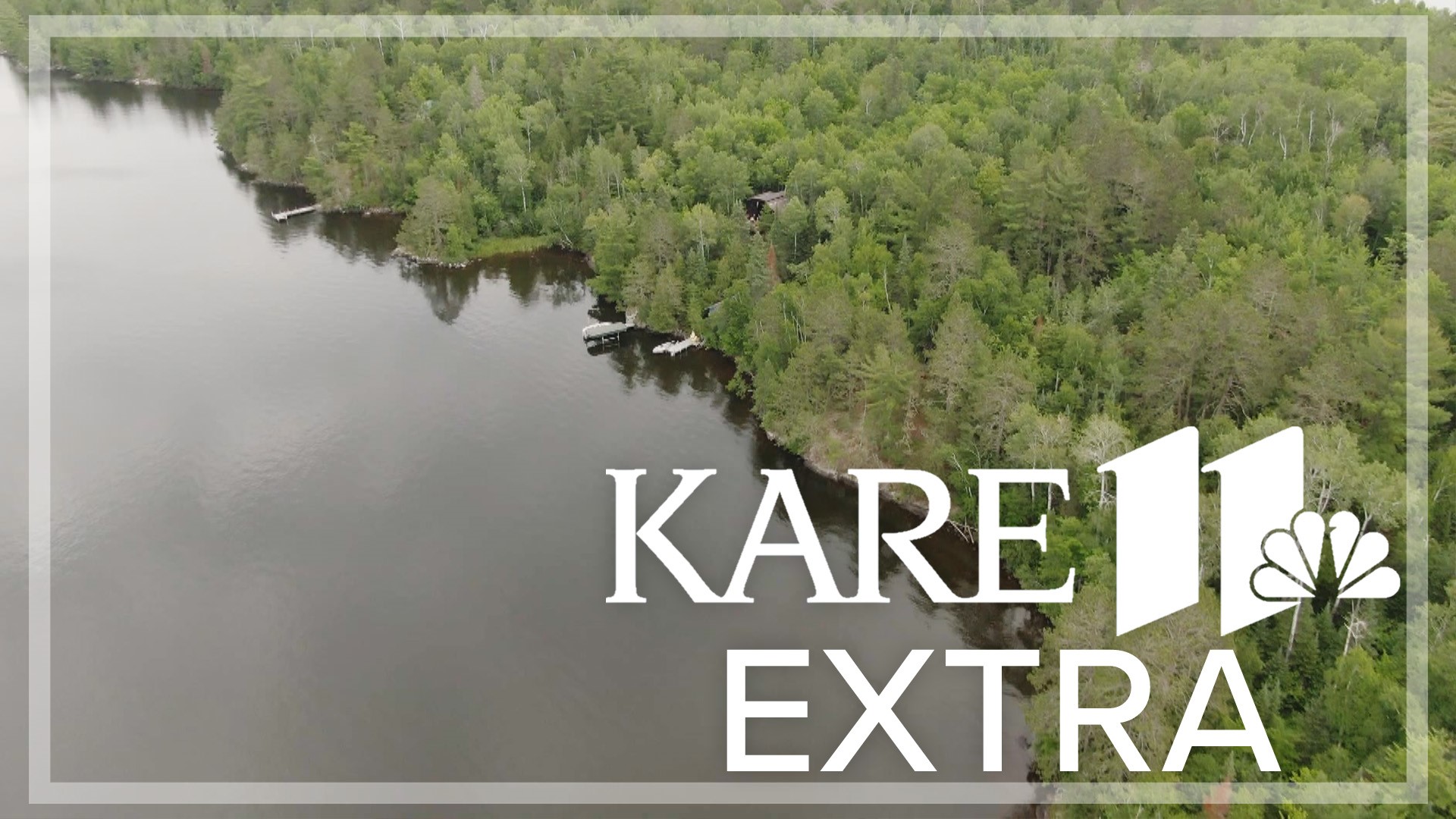MINNEAPOLIS — Minnesota’s north woods are the stuff of Paul Bunyan’s legend, part of the horizon on the longstanding license plate, and the canopy for cabin country. And yet, research indicates that the warming climate threatens the iconic treasure and could transform the state into something resembling Kansas.
Riding in the bow of a boat cutting across Lake Vermilion in mid-July, Dr. Lee Frelich, director of the University of Minnesota’s Center for Forest Ecology and co-author of the research, points to his favorite boreal species, the black spruce, which he notes goes almost all the way to the Arctic Ocean.
But this trip is much more than a summer escape.
“They invite me up here every year to give a presentation about my research,” Frelich said.
As far north as Lake Vermilion “feels,” it is not far enough north for the boreal forest to escape the current warming climate.
“We’re at the very southern edge of the boreal forest here, which makes it vulnerable to climate change,” Frelich said.
The southern boreal forest is home to aspen, birch, fir, red and white pine, and spruce. Overall, this forest generally needs a four-month growing season, according to Frelich, which the warming climate is extending in these parts.
“There’s a few red oak seedlings around here. And I think they’re moving in and expanding because the climate is already warmer than it was 40 years ago,” Frelich observed.
Frelich’s research, published by MDPI (Forests), contains several maps that focus on the eastern Dakotas, northern Iowa, Minnesota, Wisconsin, Michigan, and portions of the Canadian provinces of Manitoba and Ontario. The color-coding includes a range of prairie to broadleaf forest to boreal forest.
The 1979-2013 map, which is below, shows a significant boreal forest footprint in Minnesota’s Arrowhead region.


Beyond that, other maps show a range of possibilities in 2070, largely dependent on CO2 emissions.
The least-change map (Figure a) shows a mixed forest in the Arrowhead that would include boreal species, hanging on in northeast Minnesota.
The greatest change (Figure f) shows prairie (red) across much of Minnesota and only a broadleaf forest (yellow) remaining in northeast Minnesota.


“That would be maple and oak in Cook County, and the boreal would be totally gone, and Minnesota would essentially be the new Kansas,” Frelich said.
Maintaining Minnesota’s iconic cool, according to Frelich, means eliminating fossil fuels in two decades.
“My guess is we’ll do the business-as-usual scenario. So, I often tell people that and then say that it’s up to you to prove me wrong by taking some action and helping to reduce CO2 emissions,” Frelich said.
Fighting for the forest with trees
On this same midsummer day, east of Lake Vermilion and deep in the north woods, the buzz of brush cutters – weed whackers with blades – can be heard, as a crew with The Nature Conservancy clears growth from around planted or natural white pines.
“Our hope is these young trees will grow up to be big trees,” said Chris Dunham, resilience forestry manager at The Nature Conservancy, as he surveyed the landscape.
Dunham said the organization fights for forest-based climate research, including Frelich’s.
“What we’re trying to do is use nature as one of the components of tackling climate change or combating climate change,” Dunham said.
As it turns out, Dunham noted the white pine can handle warmer, drier weather, and the species is part of TNC’s ongoing, diverse forest approach that plants trees to both preserve and adapt.
“In a lot of ways, climate change can make people feel like, oh, it’s going to be warm, and we’re going to have future conditions that look more like Kansas, when that might play out that way. But there’s still hope.” Dunham said.
Frelich noted, “White pine is an odd species. It can be anything it wants.”
The Nature Conservancy’s Work is welcomed by Frelich. But he said humanity’s action now can help determine the future of Minnesota’s beloved, iconic woods.
“With the maximum amount of CO2 emissions reduction that we could do, Minnesota would change only a tiny bit,” Frelich said.
Watch more local news:
Watch the latest local news from the Twin Cities and across Minnesota in our YouTube playlist:
WATCH MORE ON KARE 11+
Download the free KARE 11+ app for Roku, Fire TV, Apple TV and other smart TV platforms to watch more from KARE 11 anytime! The KARE 11+ app includes live streams of all of KARE 11's newscasts. You'll also find on-demand replays of newscasts; the latest from KARE 11 Investigates, Breaking the News and the Land of 10,000 Stories; exclusive programs like Verify and HeartThreads; and Minnesota sports talk from our partners at Locked On Minnesota.
- Add KARE 11+ on Roku here or by searching for KARE 11 in the Roku Channel Store.
- Add KARE 11+ on Fire TV here or by searching for KARE 11 in the Amazon App Store.
- Learn more about the KARE 11+ app for Apple TV in the Apple App Store.
- Learn more about KARE 11+ here.

